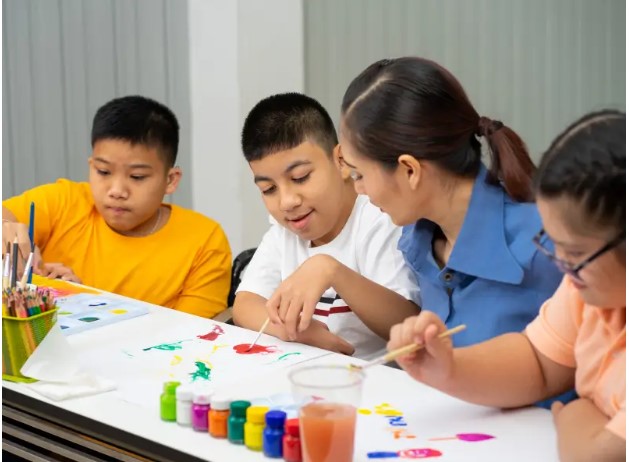Autism is a developmental condition that affects how a child communicates, interacts with others, and learns. Children with autism often experience challenges in traditional classroom settings because standard teaching methods may not match their learning needs. However, with the right approach, children with autism can thrive academically and socially. This is where autism education becomes essential, offering structured and individualized support to help children reach their full potential. By focusing on the unique learning styles of each child, autism education can improve outcomes, build confidence, and promote lifelong skills.
Understanding Autism Education
Autism education is a specialized form of teaching designed specifically for children on the autism spectrum. Unlike traditional education methods, autism education emphasizes personalized learning strategies, structured environments, and consistent routines. Teachers and specialists working in autism education are trained to recognize the strengths and challenges of each child. They create lessons and activities that accommodate sensory sensitivities, communication differences, and learning preferences. This tailored approach ensures that children with autism receive the support they need to understand concepts, engage with their peers, and develop practical skills.
Creating a Structured Learning Environment
One of the key elements of autism education is creating a structured and predictable learning environment. Children with autism often feel more comfortable and confident when they know what to expect. A structured environment minimizes distractions and helps children focus on learning tasks. It also provides a sense of security, which can reduce anxiety and behavioral challenges. In autism education, classrooms are organized carefully, schedules are consistent, and transitions are planned thoughtfully. These strategies allow children to concentrate better, participate actively, and retain information more effectively.
Tailoring Instruction to Individual Needs
Every child with autism has unique strengths and challenges. Autism education focuses on understanding each child’s learning style and adapting teaching methods accordingly. Some children may learn best through visual aids, while others may benefit from hands-on activities or verbal instructions. By using individualized instruction, educators can present information in ways that resonate with the child. This personalized approach increases engagement, encourages curiosity, and helps children grasp concepts more quickly. Tailored instruction also allows children to progress at their own pace, avoiding frustration and promoting a sense of achievement.
Enhancing Communication and Social Skills
Autism education is not only about academic learning; it also emphasizes social and communication development. Children with autism may face difficulties expressing themselves or understanding social cues. Through structured social activities, role-playing, and guided interactions, autism education provides opportunities for children to practice communication skills in a supportive environment. These experiences help children learn how to interact with peers, build friendships, and navigate everyday social situations. Improved social skills contribute to better learning outcomes, as children are more confident participating in group activities and classroom discussions.
Encouraging Independence and Life Skills
A major goal of autism education is to equip children with skills that promote independence and self-confidence. In addition to academic lessons, children are often taught practical life skills, such as organization, time management, and problem-solving. Developing these abilities supports long-term success, both in school and in everyday life. Autism education encourages children to take initiative, make choices, and practice decision-making in a safe and supportive setting. As children gain independence, they become more motivated to learn, explore new ideas, and set personal goals.
Measuring Progress and Adjusting Strategies
Autism education involves regular assessment and observation to track each child’s progress. Teachers monitor academic achievements, social development, and behavioral improvements to identify areas that need additional support. By analyzing this data, educators can adjust teaching strategies, introduce new interventions, and ensure that learning remains effective. Continuous monitoring helps children achieve measurable improvements and allows educators to celebrate small successes, reinforcing motivation and self-esteem.
Conclusion
Autism education plays a crucial role in improving learning outcomes for children with autism. By providing structured environments, personalized instruction, and opportunities for social and life skills development, autism education helps children overcome challenges and reach their full potential. The tailored approach allows children to learn in ways that suit their unique needs, fostering confidence, independence, and lifelong skills. With consistent support and understanding, children with autism can thrive academically, socially, and emotionally, making autism education an essential pathway to their success.

